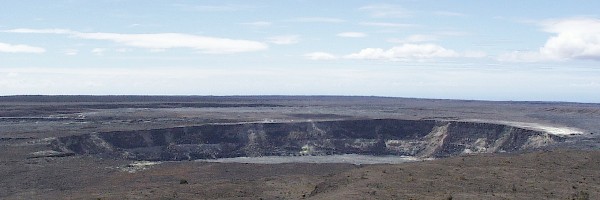
Photograph courtesy of Hawaii Center of Volcanology
Location of the Earth's Volcanoes
This is a list of some of the active volcanoes in the earth today:
|
VOLCANO |
DATE OF ERUPTION |
|
December 6, 1997 |
|
|
December 5, 1997 |
|
|
1983 and continuing |
|
|
October, 1997 |
|
|
September 15, 1997 |
|
|
August 2, 1997 |
|
|
July 31, 1997 |
|
|
June 3, 1997 |
|
|
Nov 22, 1994 |
|
|
April 2, 1995 |
|
|
March 10, 1996 |
|
|
January 1 - September 30, 1995 |
|
|
November 30, 1995 |
|
|
October 12, 1995 |
~~~~~~~~~~~~~~~~~~~~
Volcanoes in the United States

Photograph courtesy of
Hawaii
Center of Volcanology
One of the most active volcanoes on Earth is Kilauea volcano, which is on the southernmost Island of Hawaii. It mostly erupts basaltic lava in effusive eruptions, although sometimes it has explosive eruptions as well. Kilauea sits on the southeastern side of the Big Island of Hawaii. Kilauea stands just under 4200 feet tall at its highest point. It is said that Kilauea is the home to Pele, the volcano goddess of ancient Hawaiian legends.
The eruption of Mt. St. Helens in 1980 was a volcanic sneeze compared to what scientists say America will experience one day. Also, a mysterious four-inch high bulge in the ground of central Oregon is, so far, little more than a conversation piece, but sooner or later, geologists warn, a "super volcano" will strike. The eruption of stored-up energy will cover half the United States in ash in some places up to 3 feet deep. Earth will be plunged into a perpetual winter that would last years. Some plant and animal species will disappear forever.
Geologists have long known that the 10,000 hot springs and geysers in Yellowstone National Park are evidence of hot molten rock below the surface. They know that long ago the region experienced colossal eruptions on a scale never seen in recorded history, but an important question has evolved in recent years: Is Yellowstone dying or just hibernating? In the July 2001 issue of the journal Earth and Planetary Science Letters, University of Wisconsin geologists Ilya Bindeman and John Valley report new evidence indicating "a high probability of a future catastrophic eruption sometime within the next million years, and possibly within the next hundred thousand years."
Support has been found for other studies suggesting Yellowstone goes nuts every few hundred thousand years. They also propose a reason why: An epic hot spot. Hot magma welling up from below acts like a burner, melting surface rock and forming giant chambers of lava that build up over long periods. Eventually, the chambers burst. Yellowstone's volcanism is dying, these researchers say, but it has at least one last gasp in store.
The new geologic evidence adds to satellite data showing that the treasured park straddling Idaho, Montana, and Wyoming is destined to obliterate its own beauty. Not to mention that of a few surrounding states. "Yellowstone is alive and very active," Wicks said. But no one can say if or when it might become dangerously active.
"Super explosions, about 1,000 times more
material erupted than Mt. St. Helens in 1980, happen about every 600,000 years
at Yellowstone," Wicks says. "And it's been about 620,000 years since the last
super explosive eruption there."
Return to the Volcano Page